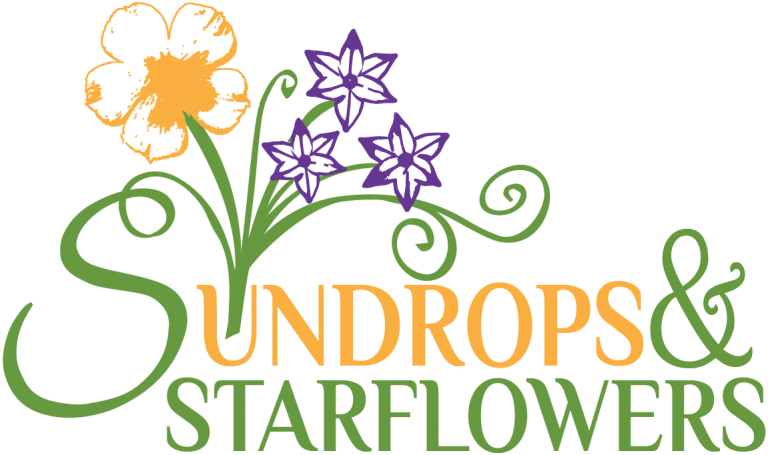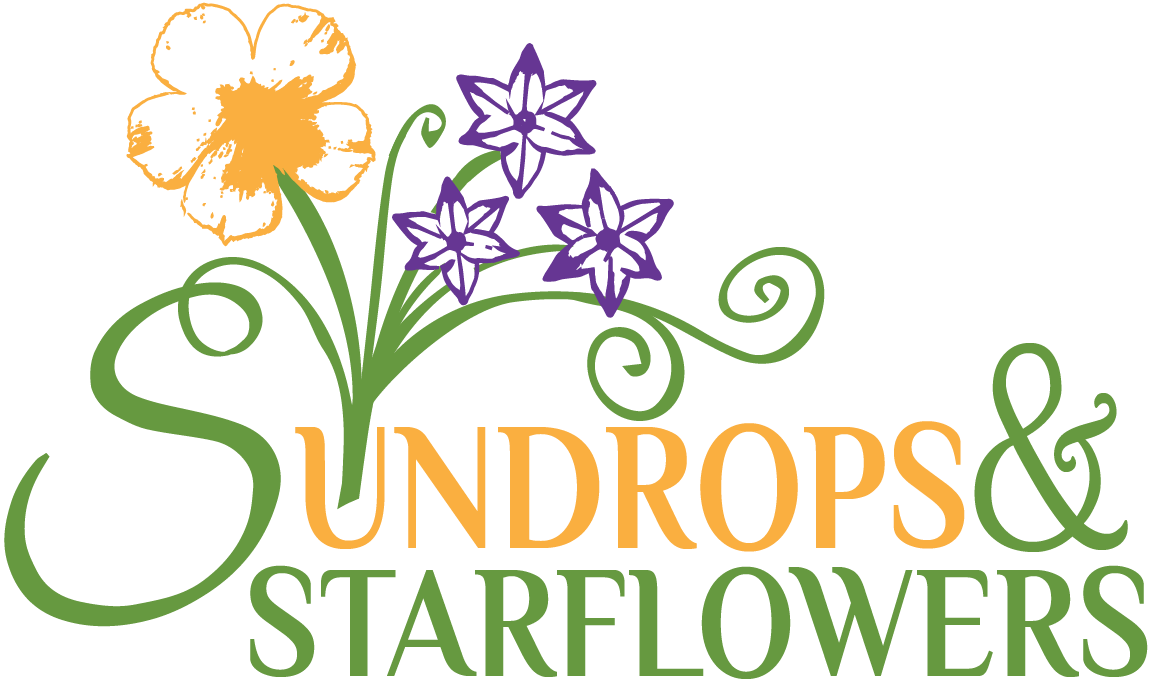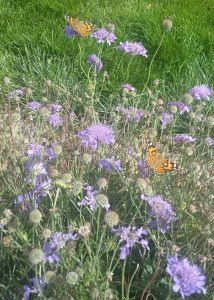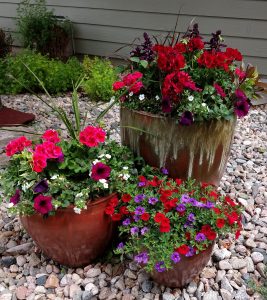 Do you have a recipe that has a secret ingredient? Well, I have a secret ingredient that keeps my container gardens looking great and keeps my petunias from getting leggy and I’ll let you in on it… it’s fertilizer! Annual flowers which are most commonly used in container gardens are “heavy feeders” – they require a lot of nutrients to keep up their show of flowers.
Do you have a recipe that has a secret ingredient? Well, I have a secret ingredient that keeps my container gardens looking great and keeps my petunias from getting leggy and I’ll let you in on it… it’s fertilizer! Annual flowers which are most commonly used in container gardens are “heavy feeders” – they require a lot of nutrients to keep up their show of flowers.
Picking the right fertilizer is important. Let me help by explaining a little about fertilizer analysis so you can feel comfortable that you are making the right choice.
The analysis is actually the three large numbers you see on every fertilizer label – put there by law – such as 10-20-10 or 10-10-10 or 18-46-0. These numbers represent the percentage (by weight) of the three major nutrients required for healthy plant growth, always in the same order: nitrogen-phosphorus-potassium (N-P-K – the symbols from the periodic table).
The first number is the percentage of nitrogen in the bag. So, a bag of 24-8-4 has 24 percent total nitrogen. Nitrogen provides plants with the ability to produce more chlorophyll, so they look greener and grow faster. Early season nitrogen fertilizer helps your annual plants grow big, fast.
The second number in the analysis is the percentage of phosphorus in the mix. Phosphorous aids in root development and increases flowering ability and bloom size. The fertilizer industry smartly markets high phosphorus fertilizer as bloom booster. High-phosphorous fertilizer is the fertilizer to use on your container gardens now. I like Fertilome Rooting and Blooming (9-59-8). If you want something natural and organic, sprinkle bone meal (0-12-0) on the soil.
The third number represents the percentage of potassium. A bag of 24-8-4 has 4 percent potassium in the mix. Potassium has many functions: it guards the plant against diseases; aids in drought protection and cold tolerance; and helps root development and photosynthesis. You might consider using a high-potassium fertilizer if insects or disease have caused damage to your plants.
You’ve probably noticed that the sum of the percentages doesn’t equal 100 percent. That’s because there are other nutrients and filler product in fertilizer mixtures. This filler helps to apply the nutrients evenly over an area or aids water solubility.
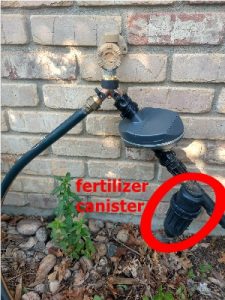 Whatever brand you use, carefully read the label and do not exceed the dosage as excess fertilizer can be harmful rather than helpful. In fact, I usually use ½ the recommended dosage over a longer period of time. If your irrigation system has a fertilizer canister, scoop up to 4 tablespoons of a water soluble fertilizer into the canister and you’re good to go. This “fertigation” system provides a little fertilizer each time you water and is very effective. Of course, you can also use a watering can or hose-attached fertilizer. Feed your plants now and be rewarded with more flowers next week!
Whatever brand you use, carefully read the label and do not exceed the dosage as excess fertilizer can be harmful rather than helpful. In fact, I usually use ½ the recommended dosage over a longer period of time. If your irrigation system has a fertilizer canister, scoop up to 4 tablespoons of a water soluble fertilizer into the canister and you’re good to go. This “fertigation” system provides a little fertilizer each time you water and is very effective. Of course, you can also use a watering can or hose-attached fertilizer. Feed your plants now and be rewarded with more flowers next week!
